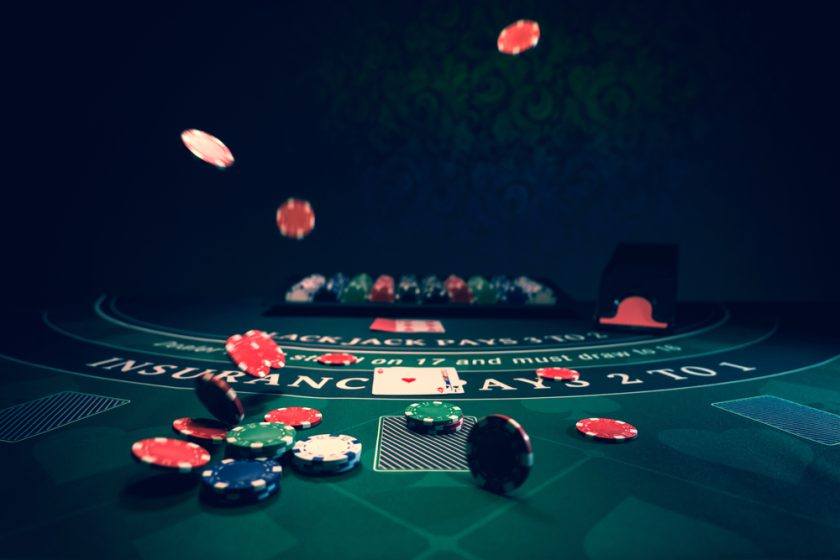Mastering Blackjack: Advanced Deviation Charts for Superior Gameplay

Understanding the Role of Deviation Charts in Blackjack
Blackjack deviation charts serve as an essential tool for players who aim to boost their long-term profits by exploiting game conditions that basic strategy cannot account for. These charts are built upon common card counting systems and use the running count to indicate when players should adjust their plays or bet sizes for optimal results. By consulting a deviation chart, experienced players can strategically minimize the casino’s edge and make smarter, more flexible decisions at the table.
Key points about deviation charts:
- They go beyond basic strategy, offering precise recommendations for specific card counts.
- Different columns in the chart correspond to varying count thresholds, or index numbers, that trigger deviations from standard play.
- Players use these charts not only to change their play, but also to manage bet sizes based on deck composition.
While learning these charts may seem daunting at first, repeated practice will make recalling crucial deviations second nature.
Why Deviation Charts Matter for Card Counters
In every casino, the house edge is designed to ensure long-term profitability for the operator. However, blackjack deviation charts empower players to adapt and respond to the evolving game landscape, as informed by the cards already dealt.
Using these charts, skilled players can:
- Modify their actions (hit, stand, double down, split, or buy insurance) based on real-time card data.
- Develop advanced card counting skills for more effective decision-making.
- Adjust their overall betting and playing strategies to mirror the changing probabilities of the game.
Comparing Basic Strategy and Deviation Techniques
Basic strategy provides a solid foundation for new blackjack players, outlining the statistically optimal plays for every hand against any dealer upcard. Yet, even with perfect basic strategy, the house will still ultimately have a slight advantage.
Deviation strategies leverage information from card counting to push that edge back in the player’s favor. By making calculated changes-only when justified by the count-players can selectively outperform basic strategy for specific situations, giving themselves an opportunity to beat the house more consistently.

Common Card Counting Approaches Explained
Most popular card counting methods assign values of +1, 0, or -1 to each card dealt:
- Cards 2 through 6: +1
- Cards 7 through 9: 0 (neutral)
- 10s, Jacks, Queens, Kings, and Aces: -1
With each hand, players adjust their running count based on the dealt cards. For example, if you hold a 10 and J, while the dealer shows a Queen, you subtract three from your count, indicating a larger number of high cards have left the deck.
Five Essential Blackjack Deviations Every Player Should Know
Not all deviations are equal. Here are five common adjustments advanced players use based on card counting and deviation charts:
- Standing vs. Hitting: The standard advice is to stand on a 12 against a dealer’s 4. However, if your count reveals many high cards have already been played, it may be safer to hit, since lower cards are more likely to appear.
- Taking Insurance: Generally, insurance is a poor bet. If the count shows a high remaining number of 10-value cards and the dealer has an Ace up, insurance becomes more appealing as the dealer’s chance of a blackjack increases.
- Changing Doubling and Splitting Tactics: While doubling down on 10 or 11 is usually correct, a high count may justify doubling on a 9. Likewise, splitting hands such as 9s or even 10s becomes advantageous when the count predicts more high cards, especially if the dealer’s upcard is a 5 or 6.
- Surrendering Strategically: Surrender is rarely advised in basic play. However, in high-count scenarios where you hold 16 and the dealer shows a strong card (9, 10, or Ace), surrendering may limit your losses since the chance of the dealer making a strong hand or your busting increases.
- Adjusting Bet Size: One of the most powerful uses of deviations is bet adjustment. In positive counts (many high cards left), increasing your wager takes advantage of the improved odds. Conversely, in negative counts, reducing your bet minimizes expected losses.
Blackjack deviations-when properly applied-lower the casino’s advantage and give skilled players a much-needed edge, but require careful card counting and keen observation of table conditions.

Decoding the Blackjack Deviation Chart
Blackjack deviation charts look similar to basic strategy charts but include additional layers of information linked to the count. Each row or column references a specific player hand versus a specific dealer upcard, recommending adjustments when predetermined index numbers are reached.
Here's a breakdown of chart notation:
- Numeric cards (2-10) represent literal card values, while "A" denotes Ace.
- Hard totals are combinations with no flexible Aces (e.g., 9+8=17).
- Soft totals include hands where an Ace counts as either 1 or 11 (e.g., Ace+6 for a ‘soft 17’).
- A dedicated section will cover splits.
Common Chart Symbols and Their Meanings
On most deviation and strategy charts, you’ll encounter:
- H: Hit
- S: Stand
- Dh or D/H: Double if allowed, otherwise hit
- Ds or D/S: Double if allowed, otherwise stand
- SP or P: Split
Always consult the chart’s legend for unique or variant-specific symbols, including possible surrender plays (often marked with "R" for "surrender" or "Rh" for "surrender if allowed, otherwise hit").
Applying Deviation Charts at the Blackjack Table: A Step-by-Step Guide
To maximize value from deviation charts in live games, follow these steps:
- Calculate the True Count: Divide your running count by the number of decks still in use. For instance, a running count of +4 in a game with two decks left gives a true count of +2.
- Assess the Table: Take stock of all visible cards, including those held by other players, for the most accurate count.
- Reference the Deviation Chart: Cross-reference your hand value and the dealer’s upcard, then use your true count to determine whether to stick with basic strategy or make a deviation.
- Make Your Move: If your count justifies action, follow the deviation recommended by the chart for maximum advantage.

Adapting Strategy Across Blackjack Variations
Blackjack rules and table variants can influence the effectiveness of deviation charts. Understanding these differences helps players tailor their approach for every scenario.
Doubling Down in H17 vs. S17 Games
Some tables require the dealer to hit on soft 17 (H17), while others mandate standing (S17). Dealers forced to hit on soft 17 create a small edge for the casino, encouraging players to adopt a more defensive style. Conversely, in S17 games, players have a slight edge and can be more aggressive with doubling down when the situation favors them.
Using Indexes for Doubles and Splits
Deviation charts indicate which hand vs. dealer combinations are best suited for doubling down or splitting, often based on the true count. Be sure to adjust your play based on these index recommendations-not just basic strategy.
Regional and Casino-Specific Rule Differences
Rule variations may exist between physical casinos, online platforms, and even different tables at the same property. When fine-tuning your approach, consider factors such as:
- Dealer standing or hitting on soft 17.
- Total number of decks in play.
- Ability to split Aces multiple times.
- Permission to double down after splitting pairs.
- The availability of side bets (insurance, bonus payouts, etc.), which should be integrated into your broader strategy.
Final Thoughts: Leveraging Deviation Charts for Blackjack Success
Mastering blackjack deviation charts unlocks a higher level of play, turning casual players into skilled strategists ready to face changing game dynamics both online and in the casino. Commit to practicing card counting and using deviation charts outside of the casino environment to ensure confidence and accuracy when it matters most. With time, this advanced strategy will help you minimize the house’s edge and maximize your chances at the blackjack table.













